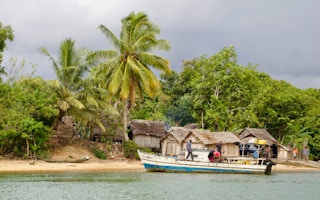Last October, at the Annual Meetings of the World Bank Group (WBG) and the International Monetary Fund in Marrakesh, member countries emphasised the urgency of scaling up development finance. In recent years, an extraordinary confluence of health, climate, and security crises has worsened global inequalities and eroded the economic and social gains of the last few decades, especially in many African countries.
Many of the continent’s key sectors were severely affected by the COVID-19 pandemic, which pushed 55 million Africans into extreme poverty in 2020. For example, in Cape Verde, where tourism accounts for 25 per cent of GDP and 23 per cent of formal employment, the economy contracted by nearly 15 per cent in 2020 – one of the sharpest declines in Africa.
African countries are also disproportionately affected by global warming, despite contributing the least to climate change. In 2022, Madagascar was hit by five successive tropical storms and cyclones, with direct damage estimated at more than $658 million, or the equivalent of 4.8 per cent of the country’s 2020 GDP. For its part, the Comoros is one of the continent’s most disaster-prone countries and particularly vulnerable to tropical cyclones: in 2019, Cyclone Kenneth inflicted damage estimated at $185 million, or more than 160 per cent of budget revenues.
Over the past half-century, drought-related risks have caused at least 500,000 deaths and more than $70 billion in economic losses in Africa. Looking to the future, the picture is equally bleak. By 2050, up to 13.5 million additional people in the Sahel region could fall into extreme poverty if adequate adaptation policies and investments are not put in place, and the effects of climate change could cost African countries $50 billion a year.
The international community has acknowledged the complex challenges posed by these crises and the urgent need for bolder action. In Marrakesh, governors endorsed the WBG’s new vision and mission to create a world free of poverty and to boost shared prosperity on a livable planet. France hosted the Summit for a New Global Financing Pact in June, leading to the Paris Pact for People and the Planet (4P), while the United Nations held a High-Level Dialogue on Financing for Development in September.
But to accelerate the fight against poverty, multilateral lenders must consider countries’ structural vulnerabilities to external and internal shocks when allocating development finance. The UN, the Commonwealth Secretariat, and other organisations already produce vulnerability indices, while others are under preparation, as at the World Bank. These should be multidimensional, with an emphasis on economic, environmental, and social challenges, but also adaptable, to meet the unique mission of each institution.
During the Annual Meetings in Marrakesh, we helped organise a session on the need to consider countries’ structural vulnerabilities in the deployment of concessional resources, with a focus on the International Development Association (IDA), the World Bank’s fund for the poorest countries. Many participants acknowledged the importance of updating the IDA’s allocation formula (of course, multilateral lenders’ representatives could not take a position on the reforms).
Post-shock support mechanisms, which many lenders create through contingency loans or instruments that redistribute funds to emergency-response measures, are of course very important. But they are not enough. We must be able to act preventively to strengthen poor countries’ financial resilience. Incorporating vulnerability into the formula for allocating concessional funds can compensate for structural handicaps, avoid financial collapses, and reduce the use of opaque exceptions, all of which would increase fairness, efficiency, and transparency. Other institutions, including the Caribbean Development Bank and the Asian Development Bank, have already adopted such an approach.
The ongoing reform of the WBG presents an excellent opportunity to reflect on how to make prevention a reality. The IDA’s efforts to improve management of issues related to fragility and vulnerability from one funding cycle to the next are welcome, as is the priority now given to crisis preparedness, a necessary condition for vulnerability not to become a poverty trap.
The cost of inaction is high for countries that are vulnerable to external and internal shocks, especially those global warming has made more frequent. According to a comprehensive report published by the World Meteorological Organization, meteorological, hydrological, and climate-related hazards directly affected more than 110 million people in Africa in 2022 and caused economic damage estimated at more than $8.5 billion. Unless multilateral lenders adopt a more preventive approach to development aid, these costs will only rise.
The views expressed in this commentary are those of the authors and not necessarily of the institutions they represent.
Patrick Guillaumont is President of the Fondation pour les Études et Recherches sur le Développement International (FERDI). Abdoul Salam Bello is Executive Director of the Africa Group II at the World Bank Group Board of Directors. Arnaud Buissé is Executive Director of France at the World Bank Group Board of Directors.
Copyright: Project Syndicate, 2024.
www.project-syndicate.org




















